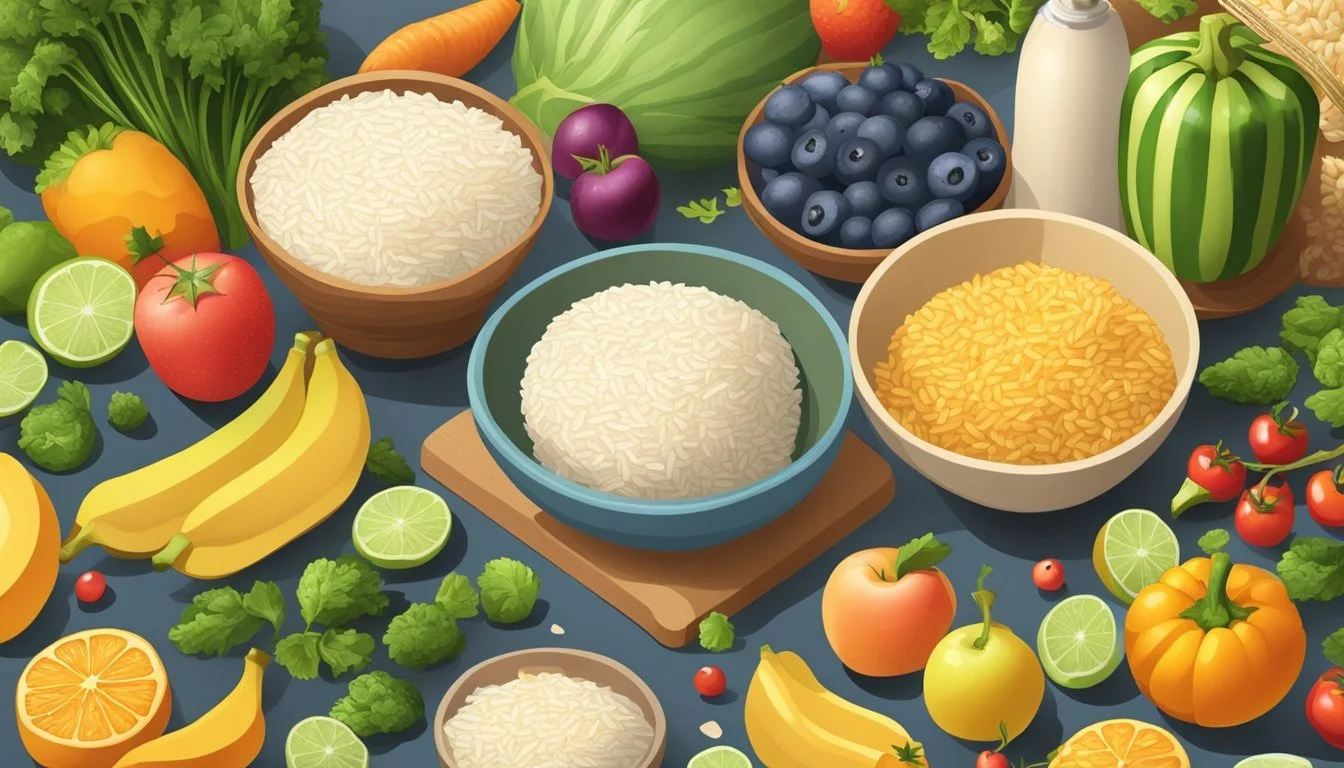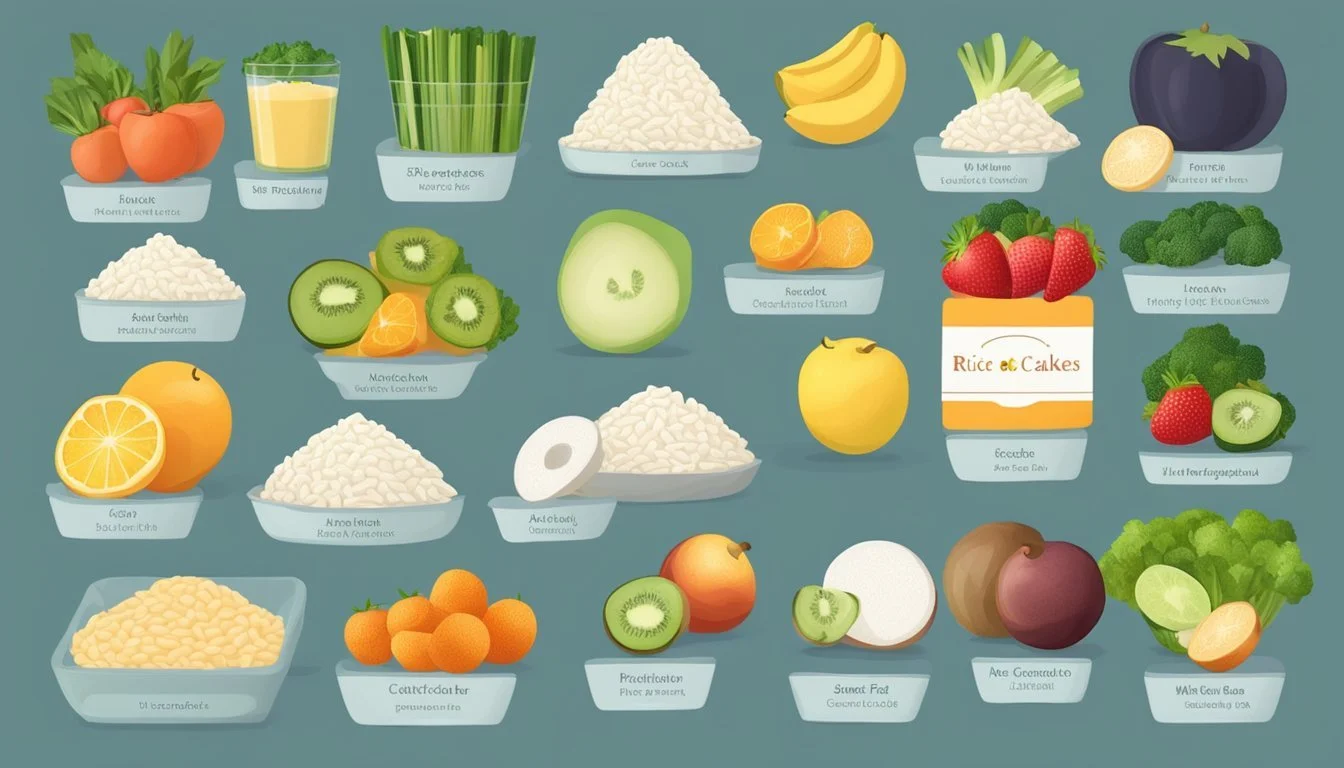Are Rice Cakes a Healthy Snack or a Diet Trap?
Uncovering the Nutritional Value
Rice cakes have long been considered a staple in the world of diet-friendly snacks. Their low-calorie count per serving makes them particularly appealing to those monitoring their energy intake. Made from puffed rice pressed together to form a circular cake, rice cakes are commonly perceived as a healthy alternative to more calorie-dense snacks like chips or crackers. They offer a crunchy texture that can satisfy the need for something to nibble on without adding a significant number of calories to one's diet.
However, the health credentials of rice cakes deserve closer scrutiny. While they are low in fat and calories, which may benefit weight management, they typically do not offer a substantial nutritional benefit. The primary ingredient is often white rice, which lacks fiber and can lead to rapid spikes in blood sugar levels. This can be especially concerning as a snack option for individuals managing blood sugar-related health conditions.
The debate around rice cakes also encompasses their potential as a diet trap. Relying solely on the calorie content overlooks other nutritional factors essential to a well-rounded diet. Some rice cakes may contain added sugars and sodium, reducing their health value. For rice cakes to be part of a healthy diet, they should be chosen based on their whole grain content and minimal added unnecessary ingredients. Furthermore, pairing them with protein or fiber-rich toppings can help create a more balanced snack. The key is to consider the nutrition label and the broader context of an individual's dietary pattern when evaluating rice cakes as a healthy snack option.
Nutritional Profile of Rice Cakes
Rice cakes are known for their low-calorie count and simple ingredient list, typically consisting of puffed rice and perhaps a dash of salt. They are often considered a staple in diet plans but examining their nutritional value is crucial to understanding their overall health impact.
Calories and Macros
Calories: A single plain rice cake made from brown rice contains approximately 35 calories.
Carbohydrates: With about 7 grams of carbs, most of which are starches, they provide a quick source of energy.
Fiber: They have a low fiber content, generally around 0.4 grams.
Protein: Rice cakes offer minimal protein, usually less than 1 gram per serving.
Fat: They have negligible fat content, typically less than 0.5 grams.
Vitamins and Minerals
Although rice cakes made from whole grains like brown rice offer some intrinsic nutrients, they are not significant sources of vitamins or minerals. Trace amounts of minerals such as magnesium, manganese, niacin, phosphorus, and selenium may be found in whole-grain rice cakes.
Comparison to Other Snacks
Comparing rice cakes to other snack options:
Chips: Rice cakes contain fewer calories and less fat.
Nuts and Seeds: Unlike rice cakes, nuts and seeds are calorie-dense but provide healthy fats, proteins, and a variety of micronutrients.
Bread: Rice cakes are lower in calories and carbohydrates but also lower in fiber.
Pros and Cons of Rice Cakes
Pros:
Low-calorie option which may aid in weight management.
Simple composition, often free from gluten and common allergens.
Cons:
Limited nutritional value, often considered "empty calories."
Lack of satiety, leading to potential overeating.
Glycemic Index and Diabetes
Rice cakes have a high glycemic index (GI), which means they can cause a rapid increase in blood sugar levels. This makes them a less ideal snack for individuals with diabetes or those trying to manage their blood sugar levels through diet.
Healthy and Unhealthy Toppings
Choosing the right toppings for rice cakes can transform them from a simple snack into a nutritious treat or a calorie-dense indulgence. It's important to consider the balance between taste and health benefits while selecting toppings.
Savory Toppings
For those who prefer savory snacks, (What wine goes well with savory snacks?) a spread of hummus or avocado provides healthy fats and a creamy texture. A tablespoon of these spreads contains approximately:
Hummus: 25 calories, 1.2g fat, 3.5g carbs, 0.9g protein
Avocado: 23 calories, 2.1g fat, 1.2g carbs, 0.3g protein
A layer of almond butter or peanut butter can offer a boost of protein and healthy fats. Mind the portion size to keep the calorie count in check:
Almond butter (1 tbsp): 98 calories, 9g fat, 3g carbs, 2.2g protein
Peanut butter (1 tbsp): 94 calories, 8g fat, 3.1g carbs, 4g protein
Topping rice cakes with protein-rich turkey or smoked salmon can be satisfying and healthy. However, processed meats like turkey should be consumed in moderation due to sodium content.
Sweet Toppings
Fruit toppings like sliced bananas, berries, or strawberries add natural sweetness with a dose of fiber and essential vitamins. Examples of typical nutrient values include:
Banana (1/2 medium): 53 calories, 0.2g fat, 13.5g carbs, 0.7g protein
Strawberries (1/4 cup): 13 calories, 0.1g fat, 3.1g carbs, 0.3g protein
A drizzle of honey can sweeten the rice cake, although it's high in sugar and should be used sparingly:
Honey (1 tsp): 21 calories, 0g fat, 5.7g carbs, 0g protein
Sprinkling cinnamon adds a burst of flavor without the calories, making it a safe choice for a health-conscious topping.
Options for Dietary Restrictions
Rice cakes can be adapted for gluten-free, dairy-free, or vegan diets with thoughtful selection of toppings.
Gluten-free: All pure nut butters are naturally gluten-free, making them safe alternatives for individuals with celiac disease.
Dairy-free: Opt for vegan cheeses or spreads instead of dairy-based cream cheese or mozzarella.
Vegan: Select plant-based toppings, such as vegan chocolate or fruit-based jellies instead of traditional honey or dairy-infused toppings.
Individuals with dietary restrictions still have various wholesome and satisfying options to create a balanced rice cake snack.
Rice Cakes in Weight Management
When considering rice cakes for weight management, one should examine their caloric content, their ability to satisfy hunger, and their potential to contribute to weight loss.
Low-Calorie Snacking
Rice cakes are known for being low in calories, with a typical serving containing approximately 35 to 60 calories depending on size and ingredients. This makes them a convenient option for those seeking to control calorie intake. However, they are high in carbohydrates and relatively low in fiber, healthy fats, and protein, which are essential for a balanced diet.
Rice Cakes and Satiety
Despite their low-calorie advantage, rice cakes may not be the most filling snack. Due to the lack of fiber and protein, two nutrients that contribute to feelings of fullness, snacking on rice cakes alone might not be satisfying. Portion sizes could increase unintentionally as individuals may consume multiple rice cakes to feel satiated.
Potential for Weight Loss
Rice cakes could be incorporated into a weight loss diet as a lower-calorie substitute for higher-calorie snacks like chips or cookies. However, to avoid "empty calories," one should choose rice cakes made from whole grains like brown rice and consider topping them with nutrient-dense foods, such as avocado for healthy fats or cottage cheese for protein, to enhance their nutritional value.



